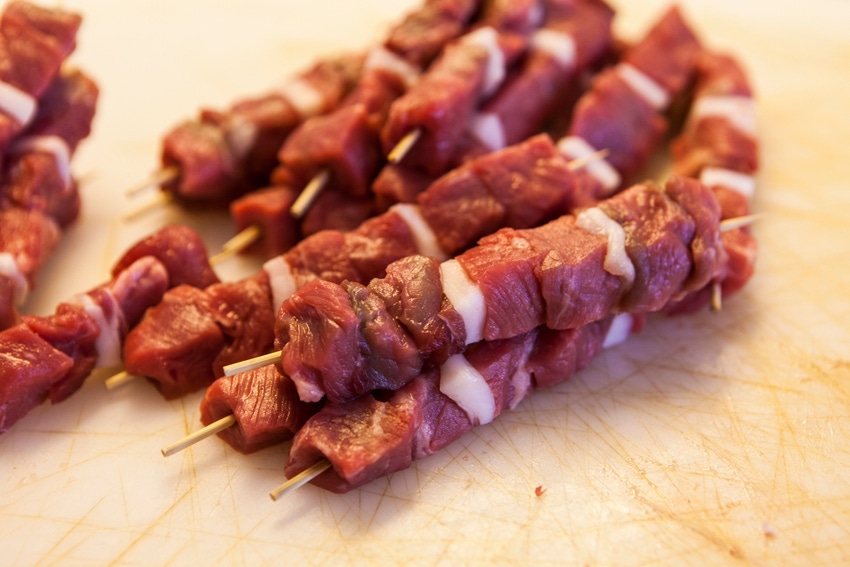Thanks to kosher dietary laws, U.S. plants can provide high-quality beef to both Jewish and Muslim buyers.
November 25, 2020

This is the third in a series of blogs about how people’s faith affects their meat consumption decisions. You can read the introduction to this series here. In this edition, we’ll consider kosher meat programs.
The word kosher comes from the Hebrew word kasher, which means fit, suitable, or pure. Kosher foods are those that conform to standards of kashrut (Jewish dietary law), which are derived primarily from the books of Leviticus and Deuteronomy along with long-held rabbinical traditions.
There are over a thousand agencies that certify kosher food items, but only a handful work with kosher meat processing. Kosher-certified meats come from animals that have cloven hooves and chew their cud, and most commonly include beef, lamb and goats. They also certify poultry and certain types of fish (with fins and scales). They exclude all pork and shellfish.
The kosher process includes a rabbi examining the animals while they are live for any defects. Slaughter is performed by a rabbi who’s been trained and authorized by a rabbinical authority. After slaughter, the animal’s cavity is inspected for defects, especially the animal’s lungs. If any post-slaughter defects are found in the cavity inspection, the meat is rejected as kosher.
For beef, sub-primals must have certain veins removed before they are soaked, salted and rinsed. Jewish law prohibits the eating of any animal blood (which also excludes veins).
Rabbinical traditions that have been practiced for over 2,000 years further require that kosher meat be soaked, salted and rinsed to remove as much blood as possible from the meat. The salt must not be as fine-grained as sugar, because it would dissolve and fail to draw out the blood. Nor should it be too coarse, as it would fall off the meat. Kosher beef chucks, ribs and briskets are pink in color because of this soaking, salting and rinsing process.
Here in the U.S., only the forequarter of the beef animal is processed; the chucks, briskets and the ribs. At a beef plant I worked in, I asked the rabbis why this is and have heard two different answers from different rabbis. If you search the web, you’ll find the same two answers in rabbinical blogs and articles:
The chucks and ribs are far easier to de-vein than the loins and rounds. Beef is affordable and readily available here in the U.S., so it’s cost-efficient to just de-vein and consume the front half.
The hind quarter is unclean. Citing the story of their Patriarch Jacob wrestling with God (or an angel) in Genesis chapter 32, Jacob’s hip is dislocated, and then the text concludes; “Therefore to this day the people of Israel do not eat the sinew of the thigh that is on the hip socket, because he touched the socket of Jacob's hip on the sinew of the thigh.” The hind quarter is thus considered unclean and unfit for consumption.
There are two main types of kosher beef standards; regular kosher and glatt kosher. Glatt kosher standards are even more strict when it comes to the smoothness and condition of the lungs.
At the plant I worked in, the beef carcasses I purchased were from a glatt kosher certified plant that was also halal certified. The beef fronts that qualified as kosher were sold as such and the non-qualifying fronts and all the beef hinds were sold as halal.
In this way, beef was providing a unique cooperative opportunity for Jewish and Muslim programs and people to work together for programs that provide excellent quality beef cuts for their respective programs.
Why is kosher meat so expensive? The process is slow. Rabbis refused to be rushed and take their time inspecting the animals pre-and post-slaughter. For glatt kosher beef, only 35% to 40% of the meat inspected is approved.
Bloom is owner of U.S. Protein, an international distributor of premium meats. Contact him at [email protected]. The opinions of the author are not necessarily those of beefmagazine.com or Farm Progress.
You May Also Like



